Memphis, TN Pollen and Allergy Report for Summer 2023
Pollen Allergy Trends in Memphis, TN
When is pollen lowest in Memphis, TN?

February
Lowest month total PPM
Avg. PPM
When is pollen highest in Memphis, TN?

March
Highest month total PPM
Avg. PPM
How does pollen in Memphis, TN compare to Tennessee?
Memphis has a higher average PPM than the state of Tennessee.
Memphis yearly avg PPM:
Tennessee yearly avg PPM:
How does pollen in Memphis, TN compare to the USA?
Memphis has a higher average PPM than the USA.
Memphis yearly avg PPM:
USA yearly avg PPM:
Is pollen worse this year in Memphis, TN?
Spring 2023 was worse than spring 2022.
Spring 2023 PPM:
Spring 2022 PPM:
Average PPM in Memphis, TN
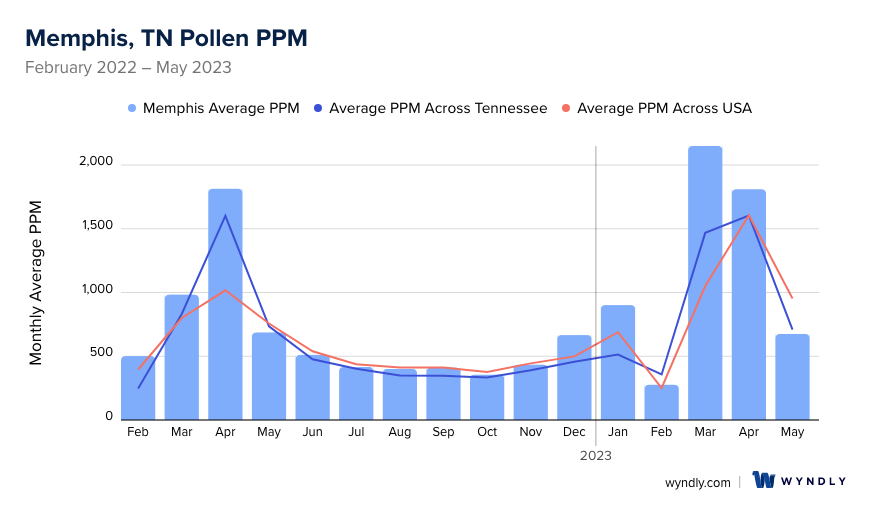
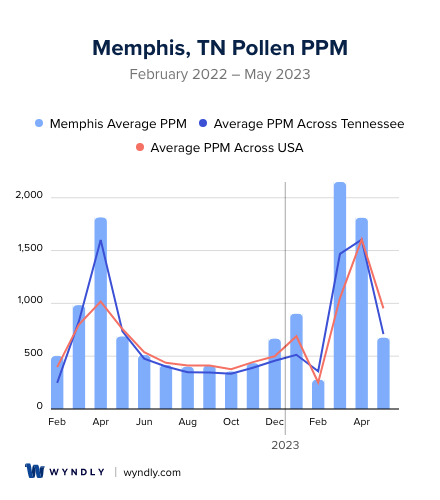
Memphis, TN Pollen and Allergy Breakdown by Month
Grass
When is grass pollen highest in Memphis, TN?
April has the highest grass pollen in Memphis, TN with an average PPM of
When is grass pollen lowest in Memphis, TN?
December has the lowest grass pollen in Memphis, TN with an average PPM of
Tree
When is tree pollen highest in Memphis, TN?
March has the highest tree pollen in Memphis, TN with an average PPM of
When is tree pollen lowest in Memphis, TN?
September has the lowest tree pollen in Memphis, TN with an average PPM of
Weed
When is weed pollen highest in Memphis, TN?
April has the highest weed pollen in Memphis, TN with an average PPM of
When is weed pollen lowest in Memphis, TN?
February has the lowest weed pollen in Memphis, TN with an average PPM of
Memphis, TN Pollen Monthly Breakdown by Pollen Type
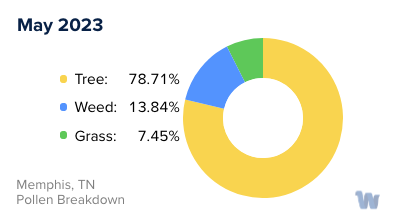
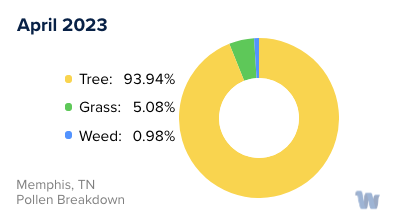
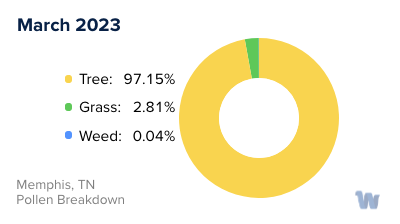
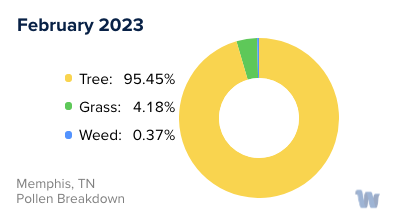
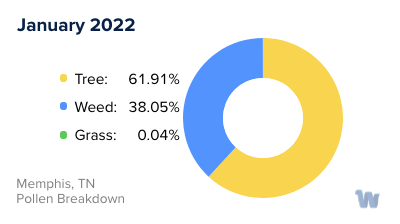
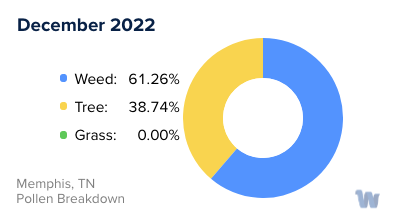
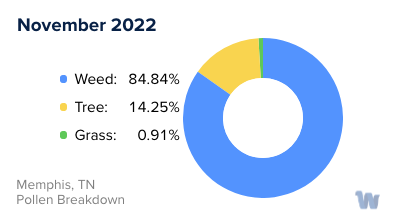
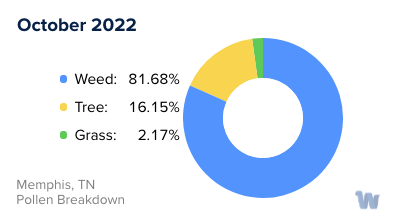
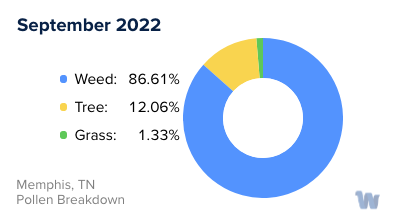
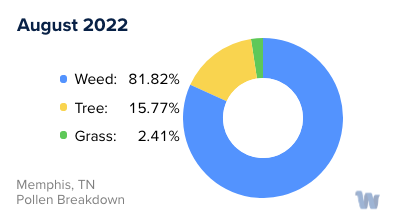
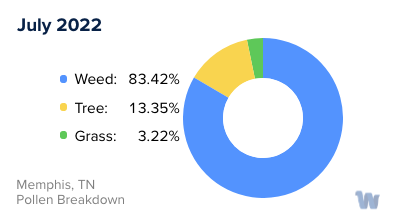
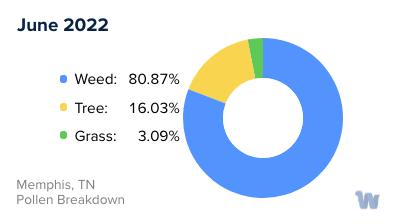
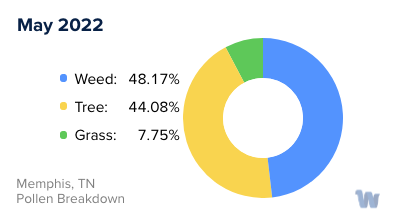
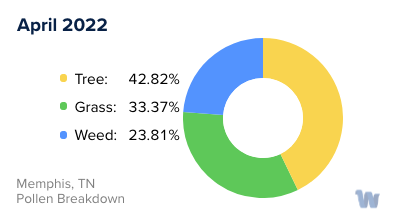
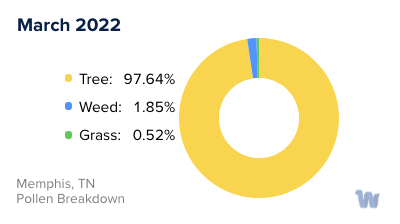
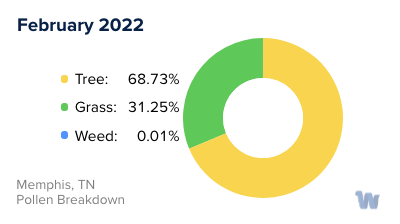
Pollen and Hay Fever in Memphis, TN
As the warm, vibrant seasons of spring and summer grace Memphis, Tennessee, it's no surprise that these seasons also bring the less than welcome arrival of pollen. For many residents, this means the onset of hay fever and pollen allergies, a common but often disruptive experience.
Pollen, a powdery substance produced by plants, trees, and grasses for fertilization, is carried by the wind, insects, and birds. However, when these tiny grains enter a person's nose or throat, they can trigger an allergic reaction, leading to symptoms commonly associated with hay fever.
In Memphis, the pollen season typically begins in the spring, with tree pollen being the most prevalent. Trees such as oak, maple, pine, and hickory are common in this region and produce significant amounts of pollen. Each tree has a specific pollen release schedule, but the peak generally falls between late February and early May.
Following the tree pollen season, grass pollen takes over. Grasses such as Bermuda grass, Timothy grass, and Kentucky bluegrass are common culprits of hay fever in Memphis, peaking from late spring to early summer. The warmth and humidity of Memphis amplify the spread and persistence of grass pollen, making it a persistent issue for allergy sufferers.
In the late summer and fall, weed pollen, particularly from ragweed, becomes prominent. Ragweed, a plant that thrives in the Southern United States, releases pollen from late summer through the first frost. Its tiny, lightweight pollen grains can travel hundreds of miles, making it a widespread allergen.
While the seasons for tree, grass, and weed pollens have traditionally been distinct, changes in weather patterns and climate may lead to overlapping seasons, potentially prolonging the allergy season.
It's important to note that the timing and severity of pollen seasons can vary from year to year based on weather conditions and other environmental factors. Understanding the types of pollen and their seasons in Memphis can help residents better anticipate and manage their hay fever symptoms.

